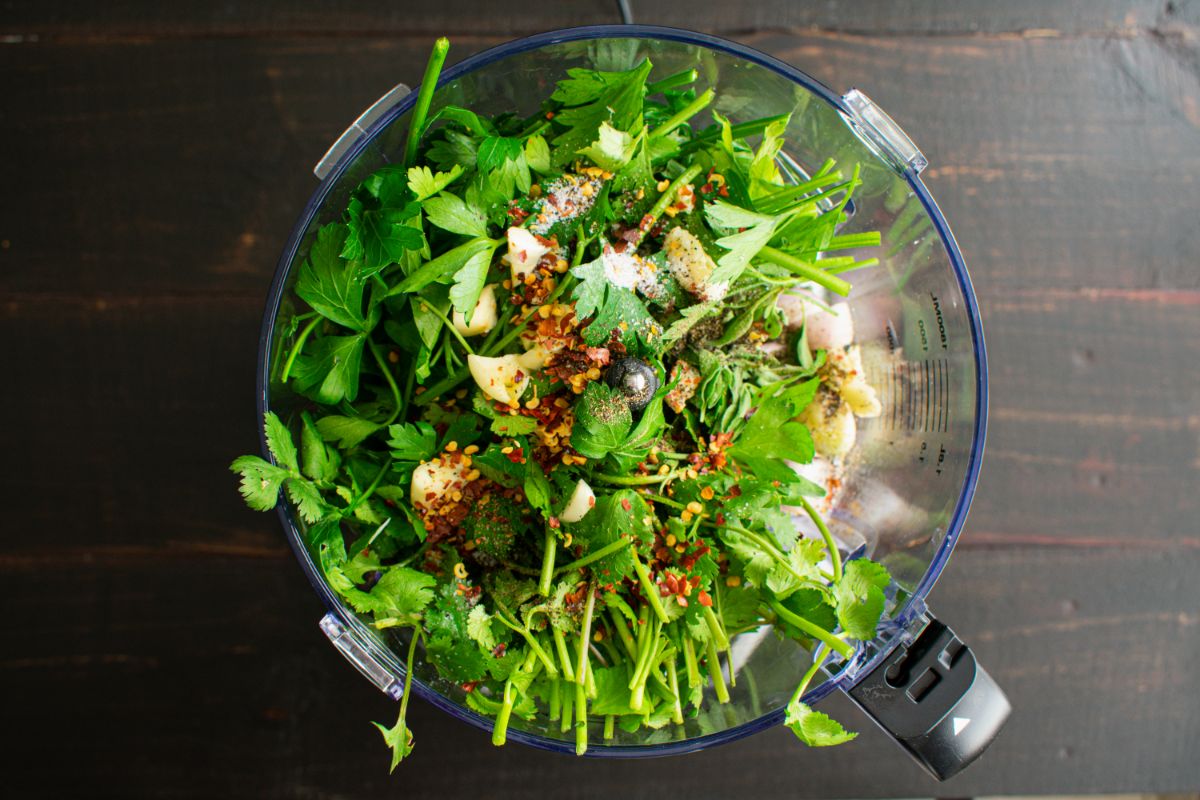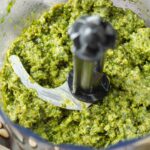A food processor is an incredibly versatile piece of kitchen equipment that easily slices, shreds, grinds, purees, and blends nearly every form of food.

Some food processors can also assist you in making vegetable and citrus-based juice, as well as blending cake batter and beating egg whites.
The food processor was formed in 1973 by Carl Sontheimer. Call had spent a year forming this product by adapting industrial blenders for home cooking.
It took a number of years for consumers to know how useful these new appliances were.
Sontheimer’s creation undoubtedly changed the game and revolutionized the way that we work with food within the home environment.
The Basic Functions And Components
Most modern food processors will come in three sizes: mini, compact, or full.
Irrespective of the size of your food processor, the main components are the same. All food processors will contain a bowl with a lid, a feed tube, and a motor.
They also come alongside a variety of attachments.
The motor is situated in the base of the processor and is undoubtedly the heaviest part of this machine. Larger machines will tend to have more powerful motors. Motors in these machines can actually weigh over 9 kg on average.
This weight typically has a utilitarian value in the sense that the heavy nature of the base provides the appliance with stability, ensuring that it does not move while the motor is in use.
The very first food processor bases were white and made from hardened plastic.
However, they now come in a variety of different colors with both plastic and metal finishes. This ensures that your food processor fits in beautifully with your kitchen aesthetic.
A shaft typically extends upward from the motor in order to power the relevant attachments.
The bowls contained therein are normally made from transparent plastic materials.
This bowl fits onto the shaft, locking it into a secure position. The lid is normally made from a similar material and locks into place on top of the bowl itself.
In older models of food processors, the locking mechanism engages the motor. However, new models of processor will include an on/off button to power the motor as this is far safer and more convenient to use.
The lid of the food processor will contain a feed tube alongside a plunger. Food can be inserted into your food processor via this tube, and you can push it down into the processor using the plunger.
Some food processor models will contain narrower feed tubes than others.
This helps when processing smaller and larger food items. The size of the bowl contained within the processor will vary in accordance to the weight and shape of the machine.
Fuller sized bowls will normally have a capacity of up to 13 cups.
Compact size bowls will normally be able to accommodate up to 7 cups. Mini-bowels can only accommodate up to 5 cups. However, these guidelines vary depending on the manufacturer.
Some models of the food process will come alongside both smaller and larger bowls to be used within the same base.
What Do The Attachments Do?
With a typical food processor, attachments will fit over the shaft contained inside the bowl. Most attachments take the form of an s-shaped blade which is otherwise known as a sabatier blade.
This helps to shred and slice food into discs.
The sabatier blade rests at the bottom of the bowl. This attachment consists of two smaller blades that are succinctly arranged on opposing sides of a central pillar the fits onto the bowl’s shaft.
Sabatier blades are typically made of metal. However, they can also be made from hard plastic. You may discover that using metal blades is far more convenient as they tend to remain sharp for longer periods of time.

The slicing and shredding discs consist of metal and these sit at the top of the bowl.
As you push food into the feed tube and it comes into contact with the disc, it will be immediately sliced or grated into the bowl. The holes contained within these discs may result in medium, coarse, or fine pieces of food being produced.
These discs can be purchased separately if they are not already included within your processor.
Fancier Attachments
Additionally to the standard forms of attachment that come alongside food processors, you can also purchase additional attachments that make your appliance incredibly versatile.
Other forms of attachments include:
- Dough blades: These blades consist of metal or plastic and have far less curved paddles than the aforementioned sabatier blade. These can be used to work dough for pizza and bread.
- Egg Whip: This attachment has two arms that contain large paddles at the end. These can be used to beat eggs and also to whip cream, resulting in a wonderfully fluffy product.
- French Fry Disc: These discs are similar to julienne discs, however, they produce far larger pieces of potato.
- Non-Citrus Juicer: Vegetables and fruits are placed into the feed tube. These collect pulp with the middle before straining juice into the bowl.
You can also purchase containers that hold all of these additional attachments together and adding work bowls can be highly beneficial if you are making several things using a food processor This removes the need to wash the bowl in between processing food.
Conclusion
To conclude, food processors are highly useful pieces of kitchen equipment that size, dice, and process food with ease. Using a food processor will drastically decrease your preparation time and enable you to get on with other cooking-related tasks.
Not only do they provide ease and convenience, the variety of blades contained within these processors enable them to produce food of all shapes and sizes.
I hope that you have found this article to be helpful and informative. Thank you for reading.
- How To Reheat A Cheesesteak - November 5, 2023
- What Are Three Must Have Kitchen Knives? - September 22, 2023
- How To Protect Edges Of Pie Crust - June 15, 2023








